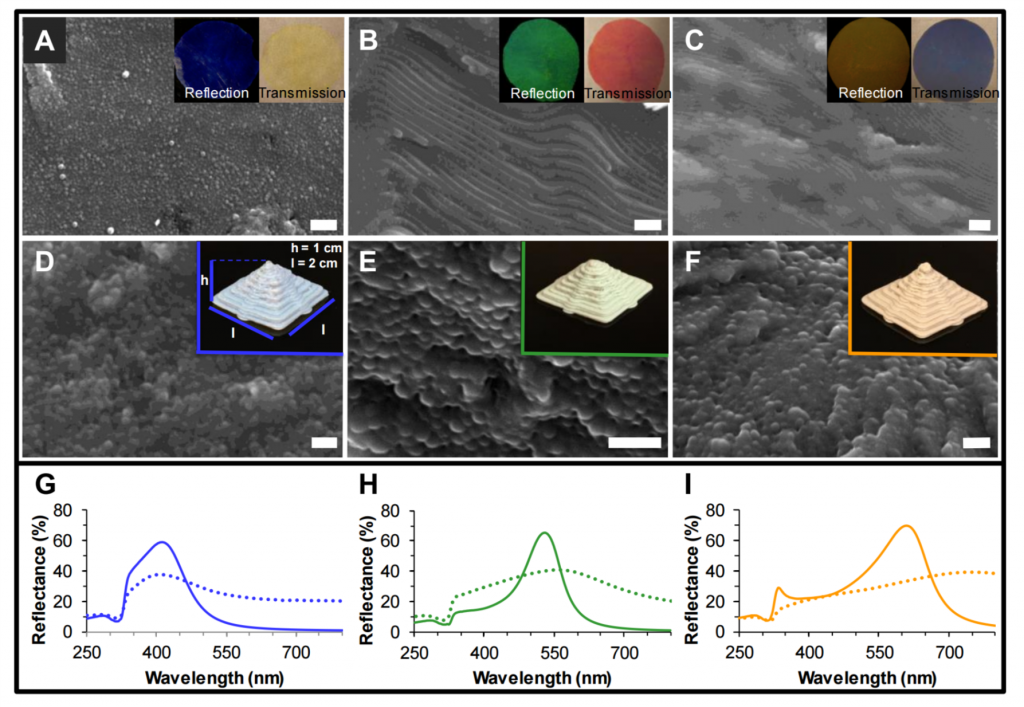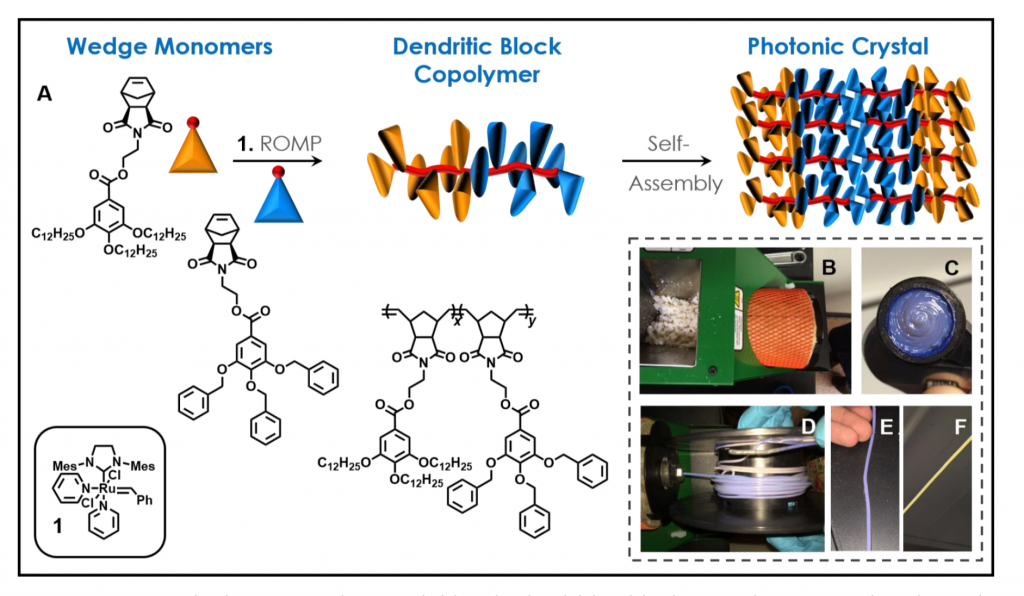Researchers from the University of Colorado present an alternative method of adding color to 3D prints. Rather than using dyes or pigments a new paper published in the academic journal ACS Nano describes how by “synthetically controlling the block copolymer (BCP) molecular weight” color can be added by harnessing the reflection properties of photonic crystals.

Like other cutting edge research and applications of 3D printing the paper draws inspiration from nature. Citing peacocks, butterflies and beetles the authors describe how, “color visualized in these objects arises from their nanostructure and is termed a photonic crystal (PC).”
PCs are periodic dielectric materials possessing a photonic band gap inhibiting the propagation of specific frequencies of light. As the color of a PC arises from the nanostructure of the material, embedded structural color has been suggested as a more environmentally friendly alternative to pigments and dyes. Thus, the ability to mimic the structural color observed in nature represents a sustainable approach to integrate color into objects.
3D printing draws inspiration from nature
As 3D Printing Industry reported last week, collaborative research between the University of Surrey in the UK and San Francisco State University resulted in a new material and the ability to reproduce the reflective structure of a butterfly wing through 3D printed gyroids. While MIT research into silicon photonics and a new lidar-on-a-chip aims to enhance 3D scanning and simultaneously lower the cost of the technology.
Application of the University of Colorado research could see 3D printing objects serving as optical filters or guides.

To fabricate the photonic crystal objects, FDM 3D printing was used. Through experimentation the scientists were able to make objects to, “reflect specific frequencies of light across the visible spectrum.”
Removing barriers to research
While the research is fascinating in its own right, what is even more remarkable is the fact it was conducted using a 3D printer available for under $1000, the FlashForge Creator Pro Dual Extrusion 3D Printer.
Dendritic, or branched form, block copolymers were designed by the team to serve as photonic crystals, 3D printing was then utilised for processing. 3D printing permitted the researchers to create the geometrically complex shape necessary to harness the photonic properties. Self-assembly of the polymers into nanostructured material occurred during the extrusion process.
The study was conducted by Bret M Boyle, Tracy A. French, Ryan Michael Pearson, Blaine G. McCarthy, and Garret M. Miyake and the full paper can be read in the ACS Nano journal.
To keep up to date with the latest scientific advances using 3D printing for research, subscribe to our newsletter and follow our active social media channels.



